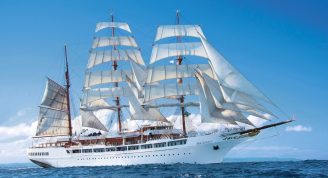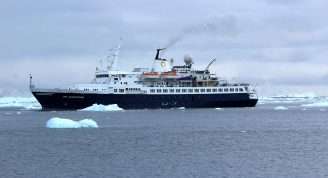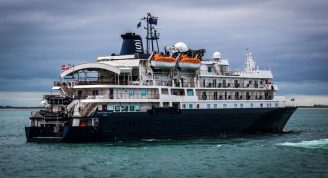Description
This cruise is part of a collection of PONANT themed voyages that are specially-tailored for English-speaking travelers who want to engage with the world. In addition to the usual elements of the PONANT experience, the listed price for these voyages includes transfers to and from the ship, talks and discussions aboard ship by world class experts, and a shore excursion or activity in each port of call that encourages guests to embrace the sights, sounds, tastes, and smells of the local environment and culture.
At a time when most of Europe was shrouded in the Dark Ages, a sophisticated society emerged in the province of Andalusia in southern Spain and in the Maghreb in northern Africa. It is conventional to refer to this civilization as “Moorish,” but it was more accurately a hybrid of three powerful cultural forces: Islam, Judaism, and Christianity. The period when Moorish kings ruled Andalusia—Al-Andalus, as they called it—was a rare moment in history when members of the three great monotheistic faiths worked side by side to build a culture of tolerance, dialogue, and coexistence.
This voyage from Tarragona to Lisbon visits several of the historical centers of this distinctive culture and asks the question whether it might be possible to learn something from this medieval example about a way forward through the turbulence and strife of our modern multicultural societies. With their vast experience in Dual Narrative guiding and conflict resolution work, two of your experts, Aziz Abu Sarah and Yuval Ben-Ami, bring a nuanced and deeply informed perspective to the dialogue. By sharing their intertwined legacies, they present a multi-narrative perspective that highlights the periods of coexistence and mutual influence, particularly during the Golden Age of Al-Andalus. These dialogues not only shed light on the historical interactions that shaped the Iberian Peninsula but also explore contemporary issues of identity, tolerance, and cultural heritage. Through their shared stories and diverse viewpoints, they create a space for mutual understanding and reflection, promoting a deeper appreciation of the region’s pluralistic past and its relevance to today’s multicultural societies.
Sailing from Tarragona, your first port of call is the city of Valencia, perhaps most famous for its production of oranges, but also a showcase of architectural diversity, from the UNESCO World Heritage Site of La Lonja de la Seda, a masterpiece of late Gothic architecture, to native architect Santiago Calatrava’s exuberant 21st-century City of Arts and Sciences.
In Cartagena, your day begins with a tour of the city’s emblematic Roman Theater, a remarkably well-preserved monument to the role of Cartagena in the defeat of Carthage in the second Punic War, and continues with a drive to Castillo de Concepcion for panoramic views over the city. Before returning to the ship, explore Calle Mayor, Cartagena’s main street, where you will see the Gran Hotel and Cervantes House—and perhaps enjoy a liquored coffee, as locals do.
During the following two days, L’Austral will remain docked in Malaga, providing the opportunity to visit two of the most important centers of civic and cultural life during Andalusia’s Golden Age. First, a full-day excursion brings you to Cordoba, a leading center of scholarship during the Middle Ages and the capital of the Umayyad Caliphate of Cordoba. Tour the UNESCO World Heritage Site of La Mezquita, an enormous 8th-century mosque converted to a Cathedral in the 13th century—a dazzling fusion of Islamic and Christian architecture that served as a model for much of the ‘Moorish’ architecture of southern Iberia and North Africa. Also visit the vibrant Jewish quarter of the city, with its 14th-century synagogue, and enjoy a lunch of Andalusian cuisine at a local restaurant before returning to the ship.
Your second full-day excursion from Malaga is devoted to exploration of the incomparable Alhambra in Granada, described by the leading Muslim art historian of the 20th century as “the greatest architectural expression of Islamic culture ever built.”
Cádiz, one of Spain’s oldest cities, is your gateway to Seville, where a stroll through the Murillo Gardens leads the way to the royal compound of the Real Alcazar. This UNESCO World Heritage site, built in the Mudéjar style in the 14th century, is today a sprawling complex incorporating architectural influences from the Renaissance, Baroque and 19th century. A short walk from the Alcazar is the Catedral de Sevilla—the largest Gothic cathedral in the world and the site of Christopher Columbus’s tomb.
From Lagos, near the southwestern tip of Portugal, you may choose between two ways to experience the natural beauty, history, and culture of the Algarve. You may stay in Lagos, tour the Old Town, visit the stunning rock formations and caves of Ponta da Piedade, and enjoy a tasting of Algarve wines. Or you may travel the short distance to Sagres on Cape St. Vincent, from where Prince Henry the Navigator directed the expeditions that led to the discovery of Madeira and the Azores. Your voyage ends in Lisbon.









